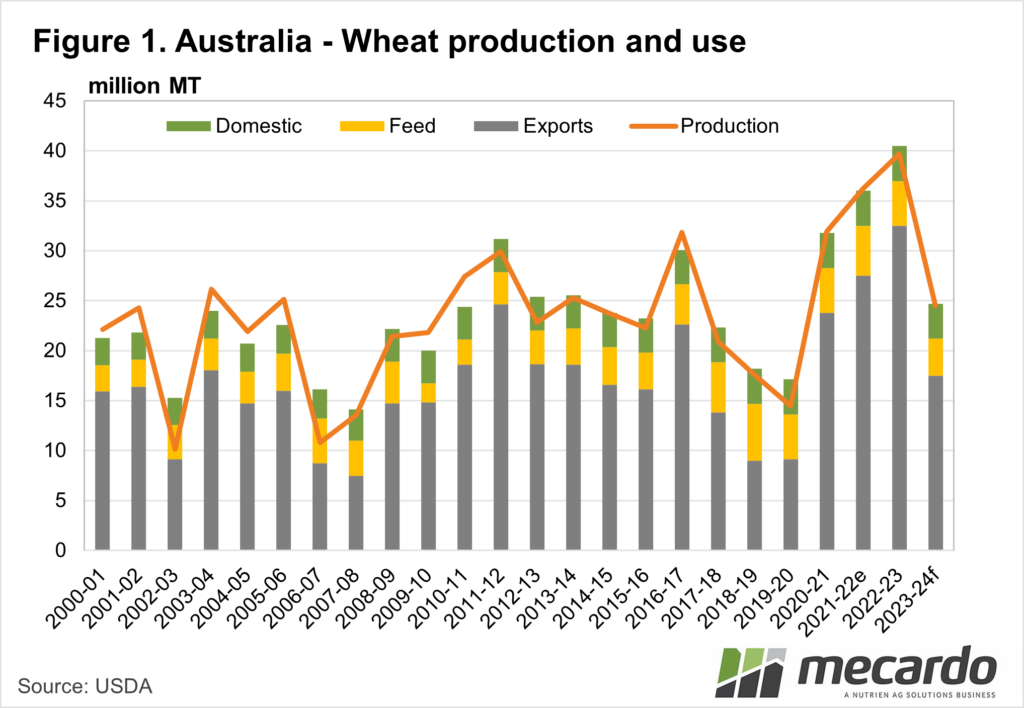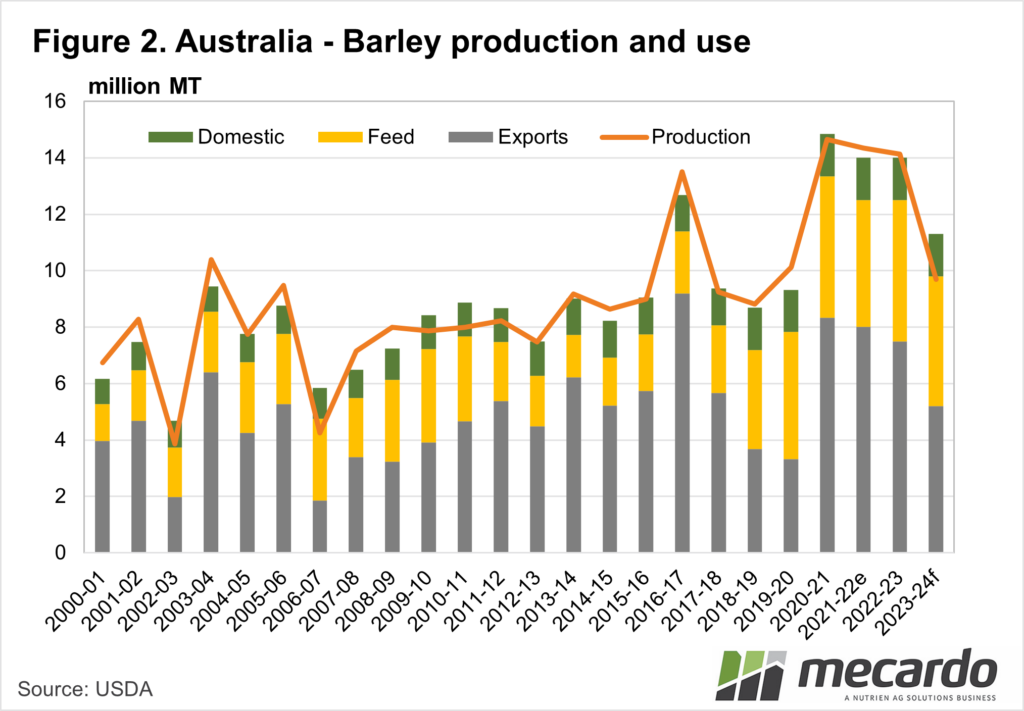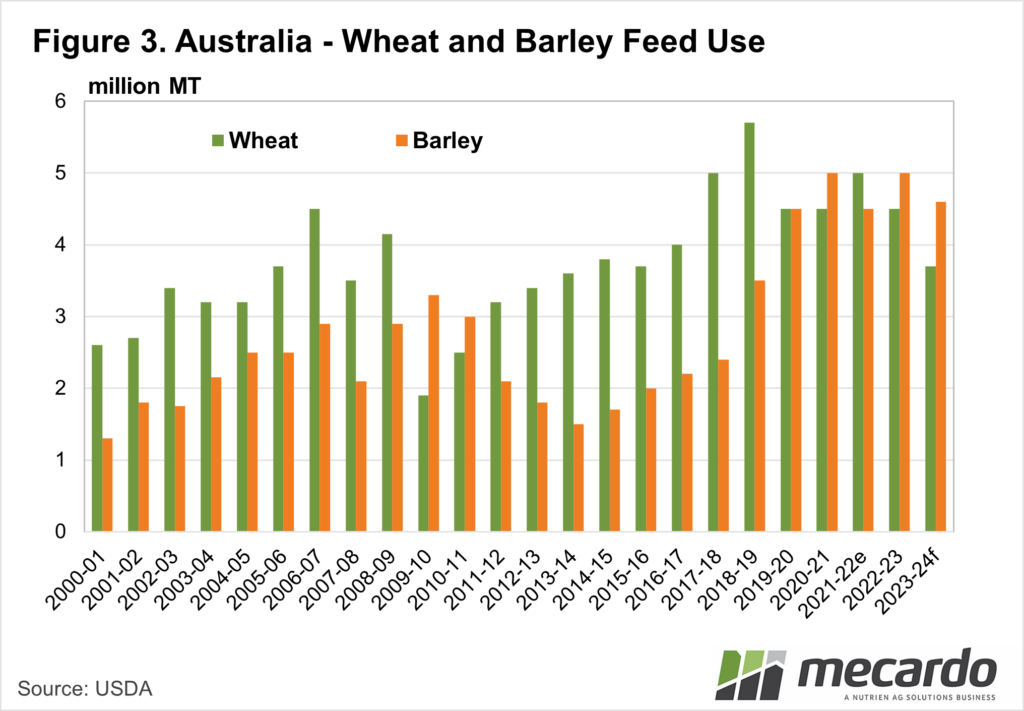The United States Department of Agriculture (USDA) has an easily accessible database for all things Agricultural production. This week we pulled out the data on Australia’s major winter crops and had a look at where Australia’s cereal crops end up.
Wheat is our largest cropping commodity, and consumption closely follows production. Figure 1 shows production, and how wheat is used. Not surprisingly, 2022-23 was a record year for wheat exports. A massive 32.5mmt of wheat left our shores in 2022-23 in a massive program.
The previous largest wheat export year was 2021-22 and before that 2011-12. Domestic consumption remains relatively steady compared to exports. Human consumption has remained in the 3-3.5mmt range for much of the last 15 years.
Feed consumption tends to vary more, with local demand and price driving how much goes to the livestock feed sector. Last year the USDA estimated feed wheat consumption was 4.5mmt, down from 5mmt in 2021-22, and the peak of 5.7mmt in 2018-19.
Interestingly, the USDA is forecasting local feed wheat consumption to fall to a nine-year low of 3.7mmt this year. This seems unlikely given the way the season is panning out and the increase in sheep and cattle numbers.
The USDA also produces numbers for Barley (Figure 2). Barley exports fell following the imposition of Chinese tariffs, but other markets made up for much of it. Barley human consumption, largely for malting, has remained relatively steady, around 1mmt for the last five years.
It has been interesting to see barley feed consumption rise in recent years to match, and in some cases, outstrip, wheat. Barley being cheaper than wheat in recent years would have helped with feed consumption.
With Barley now working into more rations, it will likely help support prices in a dry year, relative to wheat values.
What does it mean?
It’s interesting to see total feed consumption remaining very high during the past three very good seasons. Increased numbers of cattle on feed no doubt helped drive high feed consumption. Cattle on feed numbers remain high, and with more producers likely turning to grain to maintain breeding stock we would expect to see feed consumption rise this year.
Have any questions or comments?
Key Points
- Exports are the main market for wheat and barley, but domestic consumption is significant.
- A smaller proportion of wheat is consumed domestically than barley.
- With feed grain consumption high during good seasons, we might see a record this year.
Click on figure to expand
Click on figure to expand
Click on figure to expand
Data sources: USDA, Mecardo















